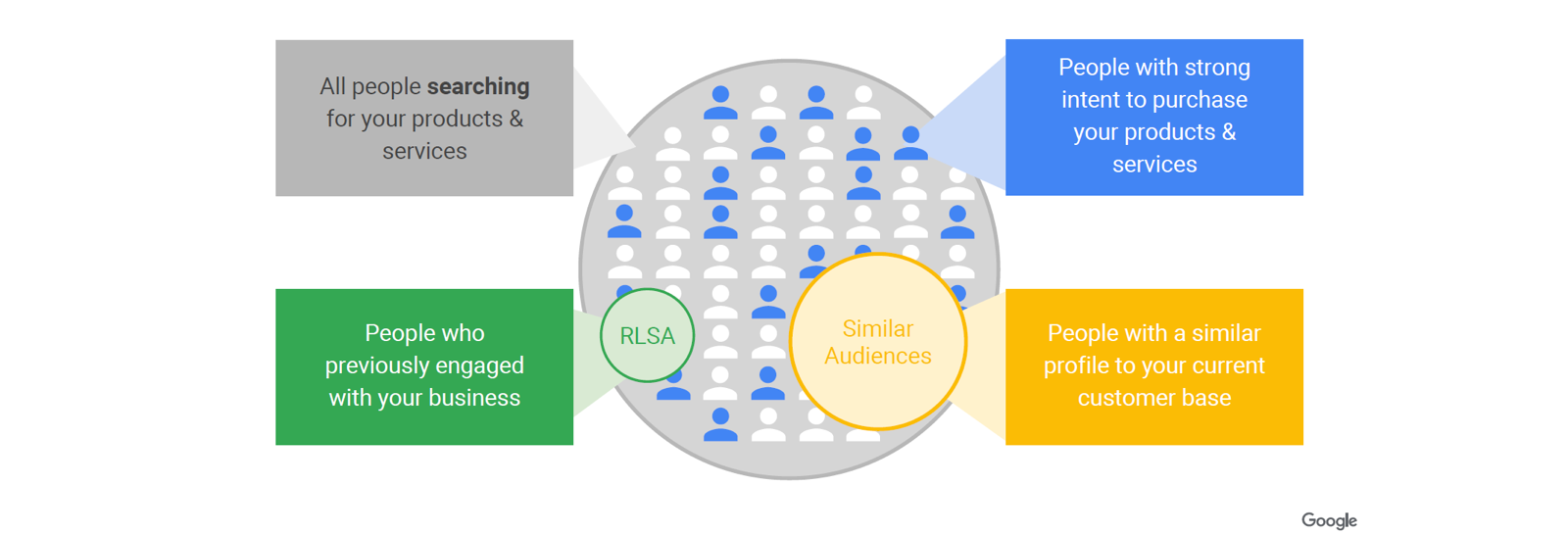For a long time, audiences were used for display ads, and keywords for paid search. If you are still only using keywords in your SEM program, I’m here to tell you that you are missing out! You should layer in a few key audiences.
How to layer your audiences
You shouldn’t be scared to layer in audiences in your campaigns. Whether in Google or in Bing, you can either target or add them in as observation. In Google, you can add these audiences at the campaign level or at the ad group level, whereas in Bing you can only do so at the ad group level.
Targeting: Only target people in the selected audiences that are searching for your keywords.
Observations: Target anyone searching for your keywords, but gather data on how these audiences perform. With observation mode, you can also add bid adjustment if you desire.
Exclude: When we talk about using audiences, we first think of targeting them, but we can also exclude them! Perhaps you want to exclude people who already converted on your website or current customers.
What type of audiences should you use?

Remarketing
Remarketing lists are built from your website visitors. You can use all visitors, or you can create customized lists for people who visited specific pages, people who visited your website but did not convert, etc. You could also exclude people who already converted on your website.
Customer lists
Google allows you to upload a list of customer emails that is hashed for privacy and that is then matched to users. Depending on the type of your business, you might want to target your current clients for repeat purchase, offer them different promotions or messaging, or you might want to exclude them altogether.
Similar lists
Similar lists are built from Remarketing lists and customer lists. Google uses characteristics from those lists and finds similar people that behave the same. On of my favourite list to use is Similar to Customers or Similar to converters.
In-Market
In-Market audiences have been around for a while now, but the possibility to use them in search campaign is recent. In-Market audiences are composed of people who are “in-market” for a specific product or service, meaning they are actively considering buying the product or service in question.
With keywords, it isn’t always possible to know what the intent is behind a search, especially with Brand terms or broad keywords. This is where In-Market audiences come in handy.
How to use these audiences in Paid Search
Adding all these audiences sounds good, but what’s the benefit? First, you might not want to act right away. Start by gathering data, see how the audiences are performing and make decisions from there.
Use bid adjustments: you can increase or decrease your bids on your audiences.
Use different messages: you can use the if function in your ads and use a different messaging for someone who already visited your website, or offer a special promotion to your current customers, etc.
Target only specific audiences: you can create a campaign that solely targets a specific audience, whether it’s RLSA or any other audience. This allows you to control the budget attributed to this audience, usually if you want to maximize a higher performing audience.
And you, how do you use audiences in your SEM campaigns?

